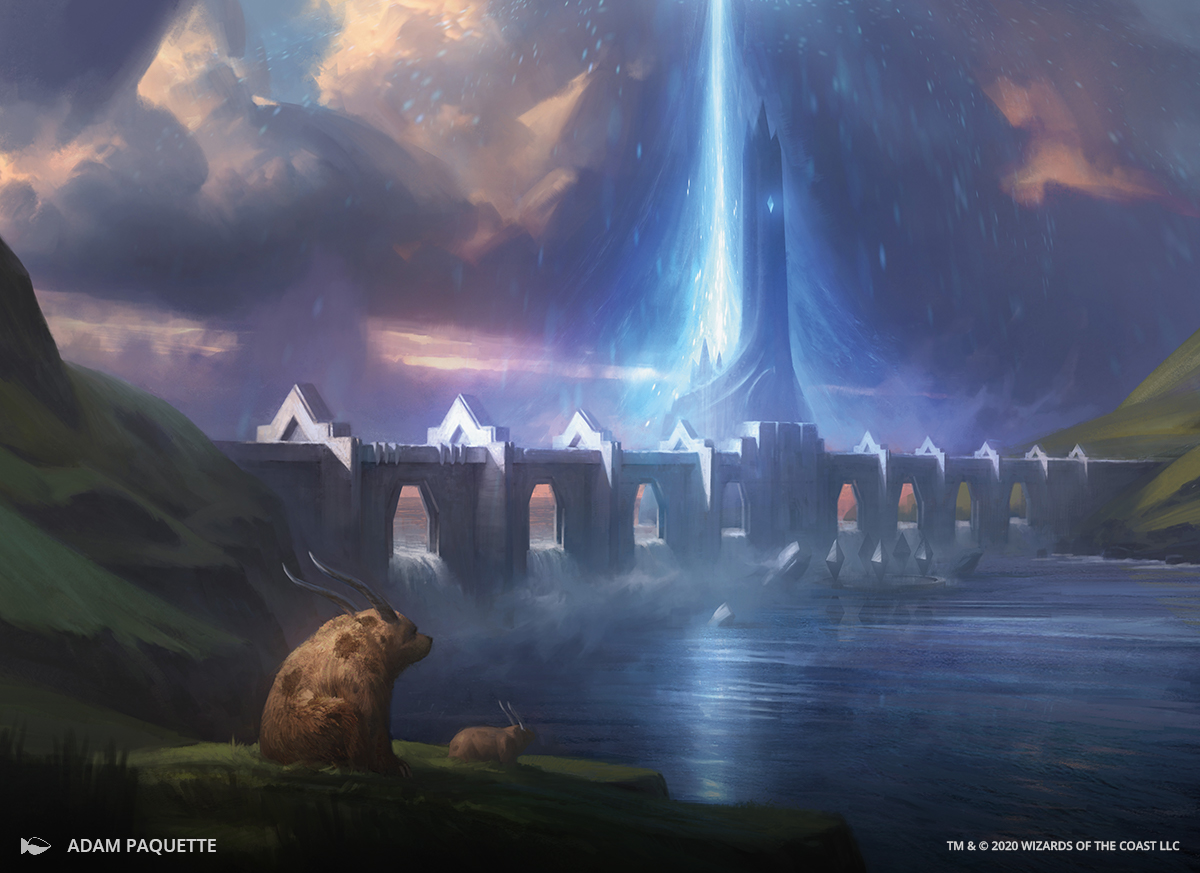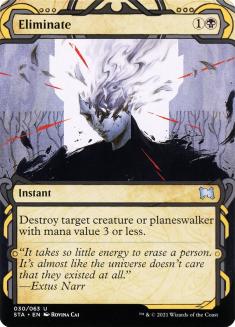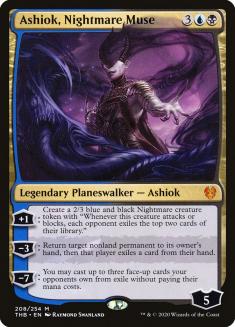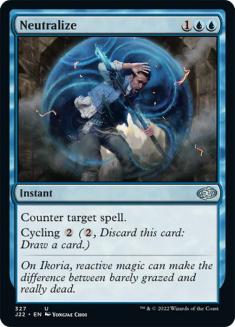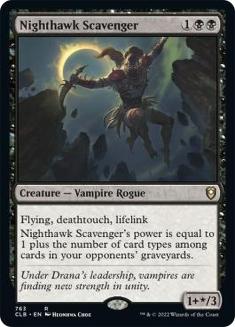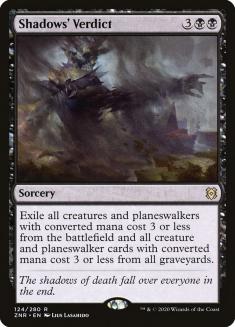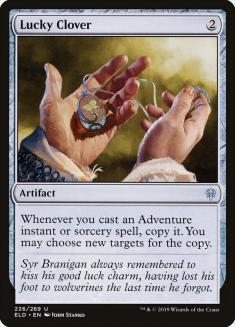It did not take a Nostradamus to predict the Uro, Titan of Nature’s Wrath banning. My study of Magic format health and game design led me to the same verdict that many others had. Removing Uro is a necessary step; however, it alone will not repair the broken Zendikar Rising Standard format. My last article was a plea to those in power to make the necessary corrections now, but more importantly, to avoid the errors in the future.
Magic is one of the most complex games of all time. As thousands of additional cards pour into the card pool, originality and compatibility suffer. This is the reality of a game centered around inventing new mechanics, new interactions, and keeping gameplay fresh set after set. We were bound to hit this glacier eventually, especially as the power creep accelerated to unprecedented speeds. If you did not read my suggestions for the development team, the summarized version is to simply slow down.
Zendikar Rising Standard, with Omnath, Locus of Creation legal, is painful for competitive players. As we log our testing hours on Magic Arena, the ranked ladder does us no favors, revealing Four-Color Ramp players one after another. Luckily, the game has changed since the last time we spoke.
Gearing your control deck to beat ramp has had mixed results in the past. Cards like Ulamog, the Ceaseless Hunger did not care that you countered them. Their effects were still devastating, making control very suspect at that moment. The same gut-wrenching feeling consumed me during the reign of Field of the Dead, a land win condition that laughed in the face of blue disruption. Ramp, on most occasions, can be the worst enemy for control players. The only chance we have, in a world full of quick mana production, is if our counterspells are clean answers to the hammers they land on us in the late-game.
Uro made that dream scenario impossible, as it returned to the battlefield with a vengeance in the late-game. I found myself easily dispatching it but doing so often left me vulnerable to the more deadly threats in the ramp deck’s arsenal. The matchup was not hopeless with Uro; however, dedicating that many resources to stop it caused most losses. Outside of the Simic Giant, the rest of the threats from Four-Color Ramp can be answered by ordinary, control means.
The banning on Monday took care of Uro. The metagame is still the same as it was, with the obvious best card being Omnath. Even without fetchlands, it easily abuses the landfall mechanic with Escape to the Wilds, Genesis Ultimatum, Fabled Passage, and even Evolving Wilds. I have gone into detail about this mistake of a card, but you all are aware of the threat it imposes on the current metagame. I know this may shock many of you, but I truly believe control is poised to take on a metagame filled with Dimir Rogues, Four-Color Ramp, and Four-Color Adventures.
As you can see from this Twitter exchange, many skilled players already see ways to combat the new metagame. Gerry mentions that the loss of Uro, their “best grindy card,” is net positive for control. I completely agree with his assessment, that Dimir Control moves into the role Sultai Control had, playing the typical reactive control game we all know and love. He mentions more Essence Scatters and Mazemind Tomes to generate card advantage and disrupt their best creature. Although I’m not as high on that counterspell and method to produce extra cards, the game theory he describes matches where I have landed for this metagame.
Creatures (3)
Planeswalkers (7)
Lands (25)
Spells (25)

It has been a couple of weeks since last discussing Dimir Control. Since then, I easily pushed back to Mythic rank on Magic Arena, even through the Uro barrier. Without it, I find myself winning in a smoother fashion, with a better battlefield advantage and by a wider margin against two of the top three decks.
Four-Color Ramp is as explosive as ever, but the power of blue disruption can contain it better now. Success depends on the five maindeck counterspells, as well as the timely removal to hit Omnath and Lotus Cobra. Letting those two run rampant early in the game can lead to a quick death, making the two-mana removal the other important piece of the puzzle.
When I have made decks in the past, there were occasions of skimping on removal. That was because the creatures were weak and the sweepers were great. With that world gone, deck creation was forced to evolve to meet the moment. Fortunately, control was gifted Heartless Act, the best two-mana removal spell since Doom Blade, to get the job done.
Heartless Act carries the biggest workload for Dimir Control. Dimir Rogues and Four-Color Ramp decks require all four copies in circulation during each game, especially the sideboarded ones, to handle the threats missed by blue disruption. This is where I separate myself from Gerry. Essence Scatter is a great counterspell for Zendikar Rising Standard but is worse than additional removal in that slot. The choice is between that and Eliminate, and after testing both, Essence Scatter handily lost the starting role.
Eliminate may not be as good as Heartless Act, but it does well enough as the fifth and sixth copy. Being on the draw against Four-Color Ramp or Dimir Rogues and watching them drop a threat ahead of your Essence Scatter is one of the worst feelings. The format is too fast to chance the aggressive decks from getting multiple threats out or the ramp deck from producing a large mana advantage from their two-drop. For this reason, removal must show up in a big way on Turn 2, even if it makes us slightly weaker against Omnath.
The only reason Dimir Control is viable is due to renewed win conditions of blue-based control. I was extremely excited to see the preview of Ashiok, Nightmare Muse a while back, only to see it slip into the crevices of Tier 2 in Esper Hero. It was a strong card in the wrong colors, as everyone in the control camp flocked around Azorius Control for the long haul. Now that all the best removal forces us to be a black-based control deck, Ashiok is back in business.
Without sounding too sensational, Ashiok is one of the best cards in the entire 75. It’s the answer-all a Dimir Control deck yearns for, with card advantage, repeatable threats, and a sneaky ultimate that no one takes seriously until it happens to them once. Against Four-Color Ramp, the Ashiok ultimate kicks in three short turns after its arrival, often ending the game on the spot. The spells in Dimir Control are not too flashy, but that all changes when you cast a bunch of the opponent’s expensive sorcery cards. The loyalty going right up to six is a huge boost toward its goal, only needing a minus seven threat to spook the opponent into action.
Ashiok is extremely hard to take down since it protects itself. Especially against Four-Color Ramp, defending it is not a hard task with this list. The sideboarded games provide hand disruption and even more counterspells, making the resolved planeswalker stick around longer. It’s hard to put in words how much better Ashiok has become since it was released, but I hope you will get to experience it as I have.
The main win condition of Dimir Control is Shark Typhoon. This is the obvious direction reactive control decks must move into, as Shark Typhoon provides a well of advantages. The blocking/attacking aspect is great, but it’s the cantrip at instant speed that makes it a control staple for the foreseeable future. Against Four-Color Ramp, it’s not as majestic as the description would make you think, but it’s good enough. When examining its impact against Dimir Rogues, its strength is much more obvious.
The creatures in Dimir Rogues are small and flying Shark tokens are much bigger. Dropping one of these monsters onto the battlefield during their combat step is a rewarding feeling, even if it required them to use one of their precious copies of Drown in the Loch on that instead of one of our future threats. Card advantage from Shark Typhoon is a must in that matchup, as the early-game forces us to one-for-one them from Turn 2 on. It feels as if I am tapping out every turn to kill one of their creatures, which is a fine plan. Eventually, their remaining threats are much weaker than our remaining planeswalkers or card draw, making this matchup ideal.
I remember when these flash decks were jam-packed with creatures that drew cards with combat damage, defended by a ton of counterspells. Those matchups were miserable, which had me worried when Dimir Rogues started gaining stream. It dawned on me that this deck ain’t it, with hits forcing me to mill and barely any use of blue disruption Game 1. I have been beating this deck so badly that I cut down one more early removal spell for another Murderous Rider and cut one Bloodchief’s Thirst for a 28th land. There are ways Dimir Rogues can be built to better handle control decks, but until then, this will remain as one of the best matchups for Dimir Control.
The deck has continued to evolve since the banning on Monday. Neutralize has become a staple four-of; Ugin, the Spirit Dragon was added; and a few of the other generic planeswalkers dropped in number. Teferi, Master of Time is not an all-star against the top decks, nor is Jace, Mirror Mage, but both are strong enough cards to stay in the lineup. The maindeck has become completely dedicated to beating Four-Color Ramp and Dimir Rogues, leaving the sideboard to help clean up the aggressive decks not listed.
Nighthawk Scavenger and Shadows’ Verdict have been amazing against the go wide-strategies in Zendikar Rising Standard. I had my doubts about both cards, but both have significantly outperformed in the last few weeks. Nighthawk Scavenger is my permanent sideboard staple for black-based control, providing a huge lifegain engine, issuing pressure, and defeating most creatures in combat. I tend to sideboard some in against opponents that I suspect are dropping all their removal, to steal games against the slower decks as well.
Shadows’ Verdict is the best complement to Extinction Event that black has to offer. It is a bit pricey at five mana, but the early targeted removal buys enough time to make it work. The fact that Shadows’ Verdict also exiles is huge, preventing irritating cards from seeing the battlefield in the future. The rest of the sideboard boosts the matchup against Four-Color Ramp and Dimir Rogues, making Dimir Control favored against both.
There is one deck that I completely ignored in my article, until now, for good reason. Four-Color Adventures is on the rise but is taking a back seat to Four-Color Ramp for the moment. I believe that the Adventures version is the overall stronger deck, but the flashiness of Four-Color Ramp, as well as the consistent mana advantage it enjoys over its competition, is enough to keep it the primary choice.
Playing Lucky Clover is a big commitment. It requires a bunch of creatures with Adventure that would not normally be included in a deck like this. Room must be left for the big payoff cards; Omnath, Locus of Creation; and the high land count required for this type of deck to operate. That’s tough to do when sixteen to twenty creatures, counting Edgewall Innkeeper, are put into the deck that would not normally see the light of day in the most traditional ramp version. Even though I think it is a better strategy, I hope the play trends down for a predictable reason.
Control, especially Dimir Control, struggles mightily to beat the card Lucky Clover. I find myself bringing in the max number of Duress on the draw, and max Negate on the play, to prevent it from resolving. In the late-game, I attempt to bounce it and stop it on the return. I have even tried to add a Forest, play Wilt, and defeat it with the power of green, but that did not yield the results I wanted either. Even though the matchup is not unwinnable, it feels bad not to have an on-color answer available in the sideboard to give us the boost we need. It turns out that control fans will have to accept that a bad matchup is out there, but there are multiple matchups that are very good to offset it.
Overall I’m very excited about this version of Dimir Control and its chances to overtake the format in wake of Uro’s exit.

